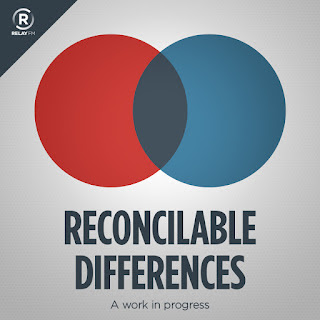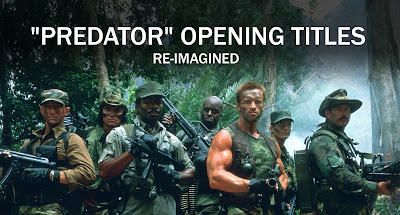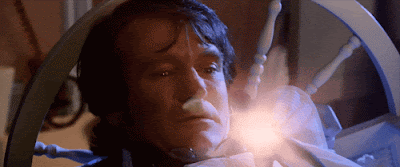Reader warning: there's gonna be a lot of pretend puke photos in this post.
If you've fired up HBO Max recently, you've probably seen that one of the most influential and prestigious television series of all time was to premiere in 4K on the streaming service. The show's first four seasons were shot on film, and the final three were shot digitally on the Alexa, but the run of the series was mastered in 1080p HD. HBO Max has been touting this 4K "restoration" of the series, produced by Lionsgate TV.
The highly anticipated 4K debut of the show was to be one of HBO Max' crown jewels of television history. It looks like it might initially serve as a cautionary tale of quality control when it comes to restorations and the technical process of bringing shows to streaming.
As far as I can tell,
Paul Haine was the first to notice something weird going on with HBO Max' presentation. In one of season one's most memorable moments, Roger Sterling barfs in front of clients after climbing many flights of stairs. As a surprise to Paul, you can clearly see the pretend puke hose (that is ultimately strapped to the back side of John Slattery's face) in the background, along with two techs who are modulating the flow. Yeah, you're not supposed to see that.
It appears that the HBO Max episodes represent the original photography, unaltered before digital visual effects got involved. Somehow, this episode (along with many others) do not include all the digital visual effects that were in the original broadcasts and home video releases. It's a bizarro mistake for Lionsgate and HBO Max to make and not discover until after the show was streaming to customers.
I want to be clear that this is a separate issue than the "reframed original film negative for 16:9" issue that has plagued many restorations that have left viewers scratching their heads. In those cases, the shows were originally shot on film and presented in 1.33-to-1 aspect ratio, but for their HD restorations the studio decided that their shows should fill the HD frame at the 16:9 aspect ratio, so portions of the negative, previously unseen and NOT intended for broadcast, were now suddenly visible,
sometimes leading to ridiculous images that were never meant to be seen by audiences...
example from "Friends" in HD, look at screen right
example from "Seinfeld" in HD
Reframing old shows to fit a new aspect ratio is antithetical to the spirit of media restoration, and cheapens the future of our shared culture. The folks at the studios who insist on hobbling their most classic television shows are really bad at their jobs.
But that's NOT what is going on with "Mad Men", since the show was mastered in 16:9 to begin with.
I decided to help illustrate the changes by diving in and creating images that might do better than words. The first thing I noticed is that, at least for season one, the episode titles and order were totally jumbled. The puke episode is "Red in the Face", not "Babylon".
update 12/2/25: The season one episodes are being updated live on HBO Max to their correct positions and titles. The corrected title:
I lined up the Blu-ray edition of the episode with the current HBO Max episode:
The fun thing about this restoration mistake is that now we, the audience, get to see exactly how many digital visual effects were actually used in a show like "Mad Men", which most would assume did not have any digital effects component. In this shot, not only were the techs and hose removed, but the spot where the pretend puke meets Slattery's face has some clever digital warping to make it seem like the flow is truly coming from his mouth (as opposed to it appearing through a tube inches from his mouth, on the other side of his face).
A Twitter user noticed that the post-production screwups are not exclusive to season one, so I fired up my comparison machine to illustrate it.
In this case, visual effects was used to obscure the fact that the show was filmed in 2000's era Los Angeles, not in 1960's New York City. Every sign was altered, and period-appropriate garbage NYC garbage cans were also added to each side of the frame.
update 12/3/25: Another comparison below. When you fire up the first episode of the first season on HBO Max, right after the now-iconic opening titles, you might wonder why the music plays against black for a few beats. Well, that's because you're missing some titles that should appear on screen.
You should be seeing the text: "Mad Men: A term coined int he late 1950's to describe the advertising executives of Madison Avenue. They coined it." However, like the visual effects examples above, these graphics do not appear in the HBO Max version.
update 12/3/25: I just started randomly looking for season two wide shots of locations... and found another one.
Looks like in s02e01, they filmed in a hotel lobby (probably The Biltmore in Los Angeles), which features modern signage for a west coast hotel... which were digitally removed for the real episode, but the HBO Max version is the raw, unedited photography.
As an aside, I've seen a lot of speculation as to how something like this could happen. I've been crafting my words carefully because I don't want to speculate or lay blame on any one process or group - I've been focusing on the results of the oopsie-doopsie. Usually, mistakes like this happen because even if only one goof was made, several steps of quality control missed the goof.
This is the final shot of s01e04, with Pete looking out over the skyline of New York City, a digital composite of the actor performing against a screen, and an animated matte painting of footage and digital paint work to create the period-appropriate skyline.
What does this mean? The visual effects omissions in the HBO Max presentation are sporadic, and not consistent throughout the series. Only certain episodes or certain shots have been somehow affected by this odd situation.
update 12/4/25, 1:00pm PT: Looks like the puke shot has been cleaned up. This is how s01e07 looks right now on HBO Max:
I did a quick check on every other example in this blog post, and the raw photography is still being displayed on HBO Max.
update 12/7/25: The s02e04 goof-em-up has now been corrected.
update 12/9/25: The pilot episode's graphics have now been restored.













































































